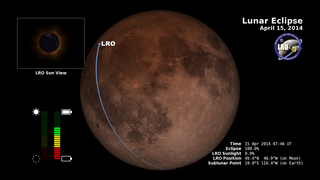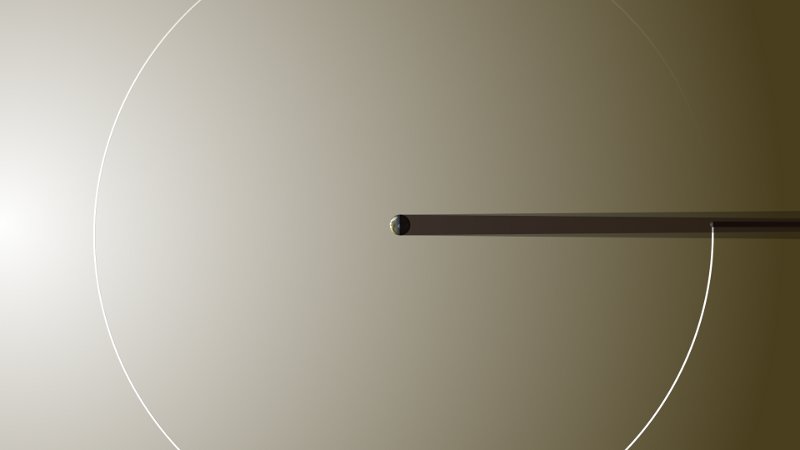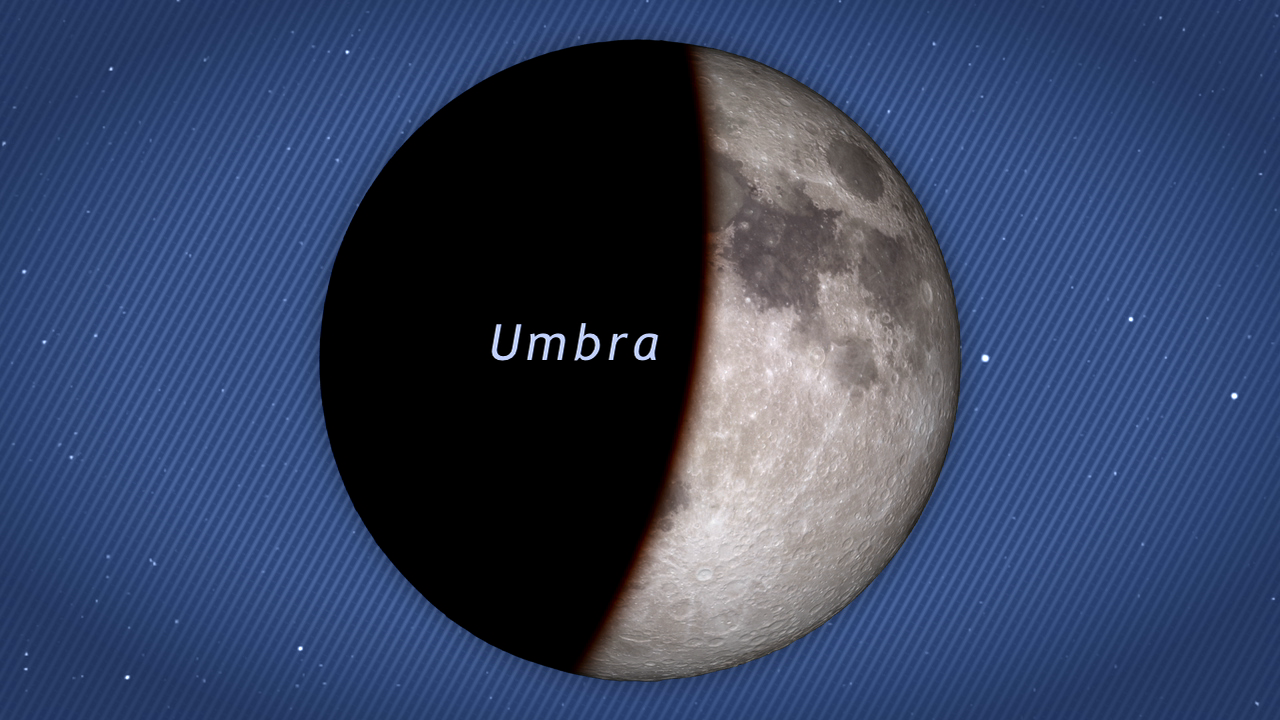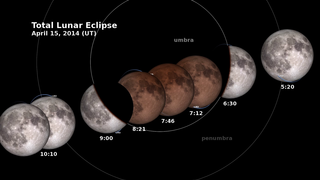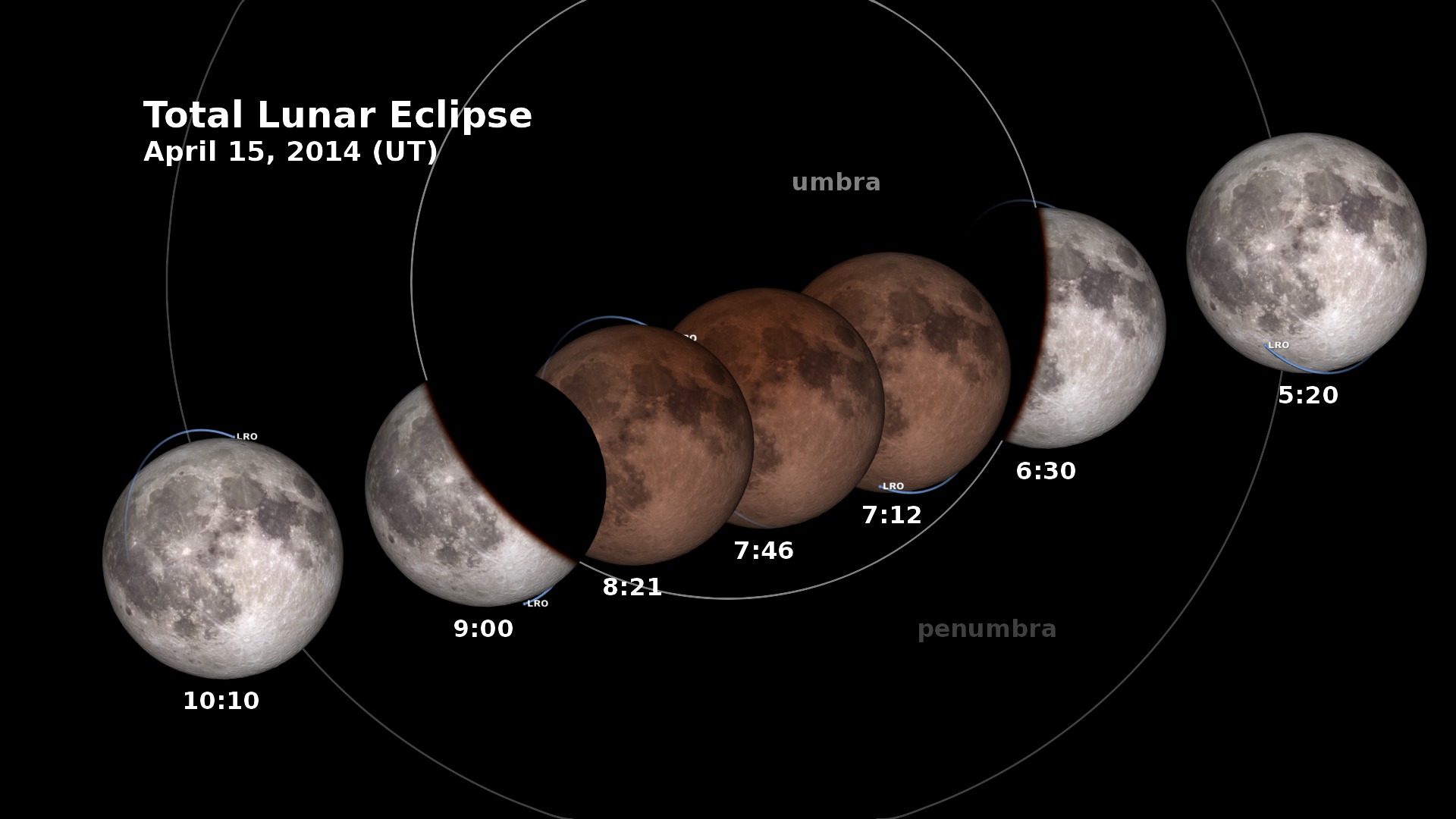Lunar Eclipse of April 15, 2014 As Viewed from the Moon
In the early morning hours of April 15, 2014, the Moon enters the Earth’s shadow, creating a total lunar eclipse. When viewed from the Moon, as in this animation, the Earth hides the Sun. A red ring, the sum of all Earth’s sunrises and sunsets, lines the Earth’s limb and casts a ruddy light on the lunar landscape. With the darkness of the eclipse, the stars come out.
The city lights of North and South America are visible on the night side of the Earth. The part of the Earth visible in this animation is the part where the lunar eclipse can be seen.
With the lunar horizon in the foreground, the Earth passes in front of the Sun, revealing the red ring of sunrises and sunsets along the limb of the Earth. The "No Stars" frames omit the starry background and include an alpha channel.
The star field. The Earth and Sun are in the constellation Pisces. From left to right, the brightest four stars visible in the full animation are Omicron, Mu, Zeta, and Epsilon Piscium.
For More Information
Credits
Please give credit for this item to:
NASA's Scientific Visualization Studio
-
Animator
- Ernie Wright (USRA)
-
Producers
- Dan Gallagher (USRA)
- David Ladd (USRA)
- Michelle Handleman (USRA)
-
Scientists
- John Keller (NASA/GSFC)
- Noah Petro (NASA/GSFC)
- Michelle Thaller (NASA/GSFC)
-
Project support
- Laurence Schuler (ADNET Systems, Inc.)
- Ian Jones (ADNET Systems, Inc.)
Release date
This page was originally published on Thursday, April 10, 2014.
This page was last updated on Wednesday, May 3, 2023 at 1:51 PM EDT.
Missions
This visualization is related to the following missions:Series
This visualization can be found in the following series:Datasets used in this visualization
-
DEM (Digital Elevation Map) [LRO: LOLA]
ID: 653 -
DE421 (JPL DE421)
ID: 752Planetary ephemerides
This dataset can be found at: http://ssd.jpl.nasa.gov/?ephemerides#planets
See all pages that use this dataset -
WAC 643nm High Sun Global Mosaic [LRO: LROC]
ID: 803
Note: While we identify the data sets used in these visualizations, we do not store any further details, nor the data sets themselves on our site.
